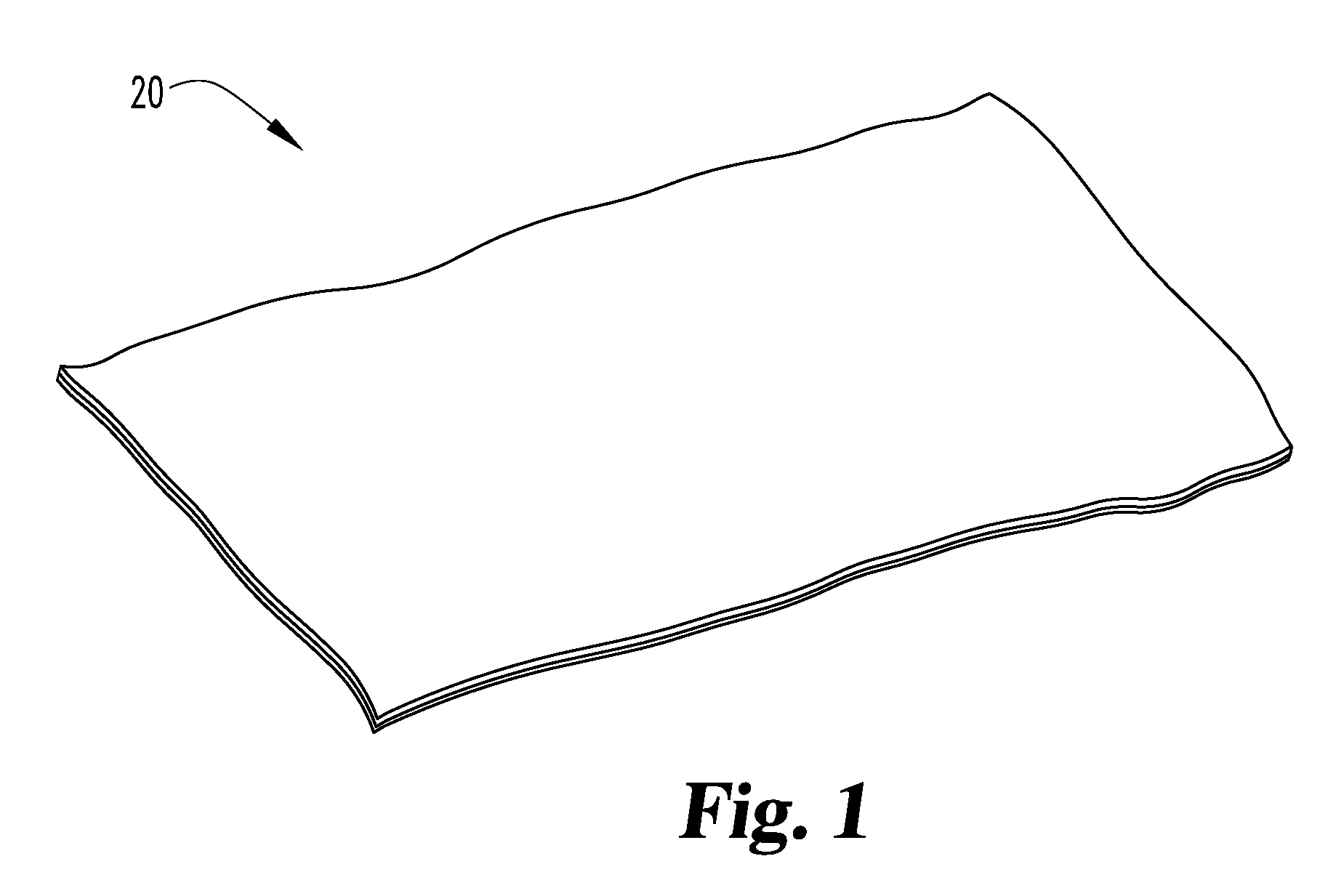Medical products including modified extracellular matrix materials
a technology of extracellular matrix and medical products, which is applied in the field of medical products comprised of extracellular matrix materials, can solve the problems of high molecular weight glutaraldehyde polymers, unsatisfactory consequences, and destruction of remodelable collagenous ecm materials
- Summary
- Abstract
- Description
- Claims
- Application Information
AI Technical Summary
Benefits of technology
Problems solved by technology
Method used
Image
Examples
example 1
[0074]First, a “high density” SIS digest material was formed. A powdered (produced by cryogrinding isolated / washed but non-disinfected) porcine small intestinal submucosa was frozen in a −80° C. freezer. Then, the frozen SIS powder was removed from the freezer and centrifuged at 7000 rpm for 30 minutes to obtain an SIS paste. This SIS paste was placed in a container with a solution of HCl (50 grams of SIS per L of HP water used; 10 mL of 1N HCl per L of HP water used). Pepsin was then added to the container (1 gram of pepsin per L of HP water used), and the paste was allowed to digest for 48-72 hours with constant stirring. This digest was then centrifuged at 15,000 rpm for 45 minutes at 4° C. After removing the supernatant, the solids of the digest were lyophilized. 100 mg of this lyophilate was then added to 1.5 mL of 0.01 M HCl, and placed in a dialysis tube (3500 MW cut off). The filled tube was placed in cylindrical jar containing 0.2% PAA (peracetic acid) for 2 hours. The PAA-...
example 2
[0075]First, a “high density” SIS digest material was formed. A powdered (produced by cryogrinding isolated / washed but non-disinfected) porcine small intestinal submucosa was frozen in a −80° C. freezer. Then, the frozen SIS powder was removed from the freezer and centrifuged at 7000 rpm for 30 minutes to obtain an SIS paste. This SIS paste was placed in a container with a solution of HCl (50-60 grams of SIS per L of HP water used; 10 mL of 1N HCl per L (kg?) of HP water used). Pepsin was then added to the container (1 gram of pepsin per L of HP water used), and the paste was allowed to digest for 48-72 hours with constant stirring. This digest was then centrifuged at 15,000 rpm for 45 minutes at 4° C. After removing the supernatant, the solids of the digest were lyophilized. 100 mg of this lyophilate was then added to 1.5 mL of 0.01 M HCl, and placed in a dialysis tube (3500 MW cut off). The filled tube (?) was placed in cylindrical jar containing 0.2% PAA (peracetic acid) for 2 ho...
example 3
[0076]In this example, particulate SIS with enhanced biodegradation resistance was formed. First, virally deactivated SIS sheets (400 grams) were mixed with 1500 HP water and 207 mL 0.1 M NaIO4, and allowed to sit for 2 hours. The periodate-treated SIS sheets were rinsed for 2 hours, subjected to a triple wash in HP water, dried (e.g., air dried or lyophilized), and cryoground. The ground SIS was then sieved to obtain particulates of particular sizes, shapes, etc., and sterilized (e.g., with EtO or e-beam).
PUM
| Property | Measurement | Unit |
|---|---|---|
| thicknesses | aaaaa | aaaaa |
| thicknesses | aaaaa | aaaaa |
| temperature | aaaaa | aaaaa |
Abstract
Description
Claims
Application Information
 Login to View More
Login to View More - R&D
- Intellectual Property
- Life Sciences
- Materials
- Tech Scout
- Unparalleled Data Quality
- Higher Quality Content
- 60% Fewer Hallucinations
Browse by: Latest US Patents, China's latest patents, Technical Efficacy Thesaurus, Application Domain, Technology Topic, Popular Technical Reports.
© 2025 PatSnap. All rights reserved.Legal|Privacy policy|Modern Slavery Act Transparency Statement|Sitemap|About US| Contact US: help@patsnap.com

